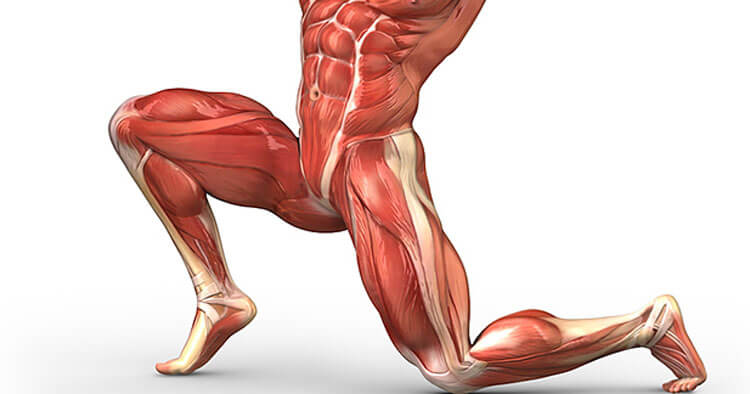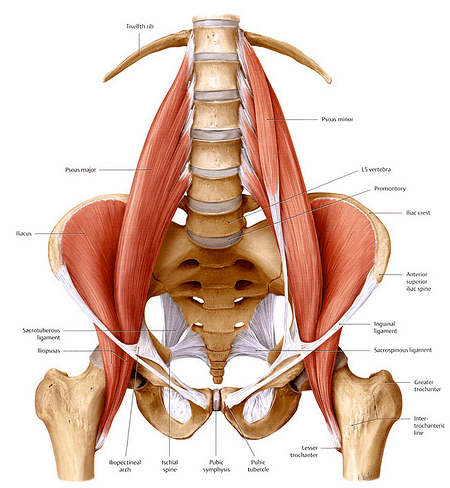Muscle Pain and Tendinopathy
Spotlight On The Hip Flexors
What Are Your Hip Flexors?
When referring to the hip flexors, you are typically referencing a group of a few muscles located deep in the front of the hip. Muscles connecting the leg, pelvis, and abdomen as depicted in the image below. The main action of the the “hip flexor” muscles wont come as a surprise, it is clearly to flex the hip. In anatomy a muscle that flexes a joint is referred to as a flexor where anatomically flexion is a movement that decreases the angle between the bones that converge at the joint. With reference to the hip, flexion is the movement which brings the knee (and thigh) up towards the abdomen, effectively decreasing the size of the angle between the front of the thigh and the tummy.
Iliacus And Psoas Your Hip Flexors
The main hip flexors (the prime movers of hip flexion) are known as iliopsoas, consisting of the muscles iliacus, psoas major and psoas minor. As can be viewed in the above image the iliacus muscle originates on the pelvic crest lying in the illiac fossa and attaches on the femur at the lessor trochanter. The psoas muscles, psoas major and psoas minor are the longer of the muscles making up iliopsoas. The psoas muscles originate from the lowest thoracic vertebrae and the lumbar vertebral bodies, passing from their origin in the spine through the pelvis on their way distal towards the common insertion with Iliacus on the former mentioned lesser trochanter of the femur (a part of the thigh bone near the hip joint).
Synergistic Muscles Of Hip Flexion
There are other muscles in the body that can assist the action of hip flexion, an example of which is the rectus femoris muscle. Rectus femoris is the most superficial of the four quadriceps muscles, the quadriceps are the large muscles making up the bulk on the front of the thigh. Rectus femoris is the only one of the quadriceps muscle that crosses the hip joint (the three other quadriceps muscles all have their origin coming of the femur not the pelvis) and can therefore rectus femoris alone can act on both the hip and the knee. By crossing the hip joint rectus femoris can act as a hip flexor assisting Iliopsoas in the action of hip flexion.
The Action And Function Of Iliopsoas
Iliopsoas when concentrically contracting causes hip flexion, which as previously mentioned means bringing the thigh up towards the abdomen. Hence when walking, the hip flexors contract and shorten raising the leg up and forward, such as in the action of taking a forwards step, or walking up stairs. Your hip flexors can also act on the abdomen, moving the abdomen towards the thighs if the thighs are fixed. An example of this is when performing a sit-up, if lying flat on your back, with your feet fixed to the floor the hip flexors contract and shorted to lift your torso off the floor into a sit-up. Conversely in the same starting position if your torso remains fixed, the hip flexors if to contract and shorten will act to lift your leg off the floor (again causing hip flexion).
Disclaimer: Sydney Physio Clinic provides this information as an educational service and is not intended to serve as medical advice. Anyone seeking specific advice or assistance on Spotlight On The Hip Flexors should consult his or her physiotherapist, personal trainer, general practitioner or otherwise appropriately skilled practitioner.



